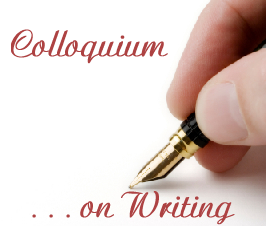
To comma or not to comma. That is the question.
Whether ’tis nobler and appropriate to place a comma after “and” and “or” when writing a list of three or more items. It is known as the “serial” comma.
“There is no consensus among writers or editors on the use of the serial comma,” according to a lengthy Wikipedia article. The Elements of Style, Fourth Edition, by Strunk and White is adamant that the comma be used in both instances. They state:
In a series of three or more terms with a single conjunction, use a comma after each term except the last. Thus write, red, white, and blue; gold, silver, or copper. . .
However, most of the texts I have consulted indicate that the use of the comma is a matter of choice. I find the explanation provided in The Elements of Business Writing: The Essential Guide to Writing Clear, Concise Letters, memos, Reports, Proposals, and Other Business Documents, by Glary Blake & Robert W. Bly, the most convincing:
There is still some debate about whether the final comma before the “and,” “or,” or “but” in a series is necessary. Newspaper tend to omit it; books tend to use it. We believe, as do Strunk and White, that the final comma provides insurance against misreading.
The mail carriers agreed they would need bicycles, motorized bikes and scooters.
In the sentence above, there is some doubt as to whether the scooters as well as the bikes are motorized.
On this point, although I have never written this way previously, I believe I have been convinced to include the comma in business writing solely for clarity unless, as the Wikipedia article discusses in detail, to do so would introduce ambiguity. In my personal writing, however, I will continue to employ my established style of omitting the comma unless it is absolutely necessary in order to assure the reader’s understanding.
I like Blake and Bly’s second example because it illustrates the point effectively:
The entertainment committee booked Barry Manilow, Gladys Knight and the Pips, and Neil Diamon for our annual convention.
They explain:
The comma in the example above prevents readers from expecting to hear the group “the Pips and Neil Diamond” at their annual convention.
No audience should ever expect to hear “the Pips and Neil Diamond.”
Finally, the reasoning of Michael Leddy, writing at Life Hack.org, is sound:
The most important thing to remember about punctuation: it’s a matter of conventions, shared agreements that help bring clarity to written communication. If you don’t agree this sentence unpunctuated difficult to read can serve as a last attempt to persuade. If you do agree, that last sentence — unpunctuated, difficult to read — can serve to confirm what you already understand.
Next week, the focus will be on spelling. In the interim, do you think you know what 30 words are most frequently misspelled? Leave a comment with your guesses and then check back next Sunday to see how you did!


4 Comments
Pingback: business » To Comma or Not to Comma: The Answer
Well, I just do comma when I feel like it. Sometimes, there, is, a comma, too, much. 😉
And sometimes I just do not use them at all. I guess as l ong as I just chat it does not matter anyway right?
The list of words can be endless.
One such word is ‘READ’
‘I love to read this article’
and it can be even said as
‘I have read this article.’
The same word has a different meaning when put in different sentences.
I use dictionary.com quite often to get my spelling right.
Spell-check does the job for me.